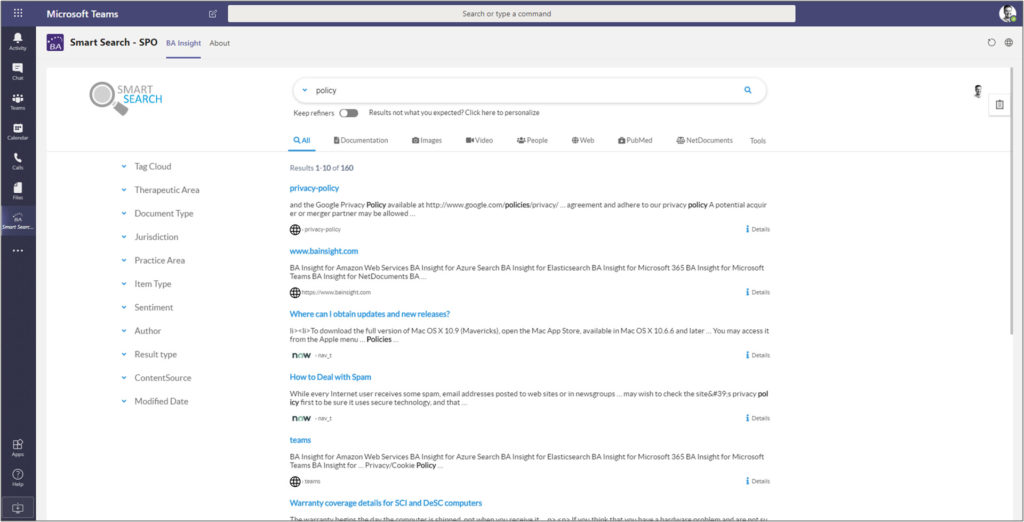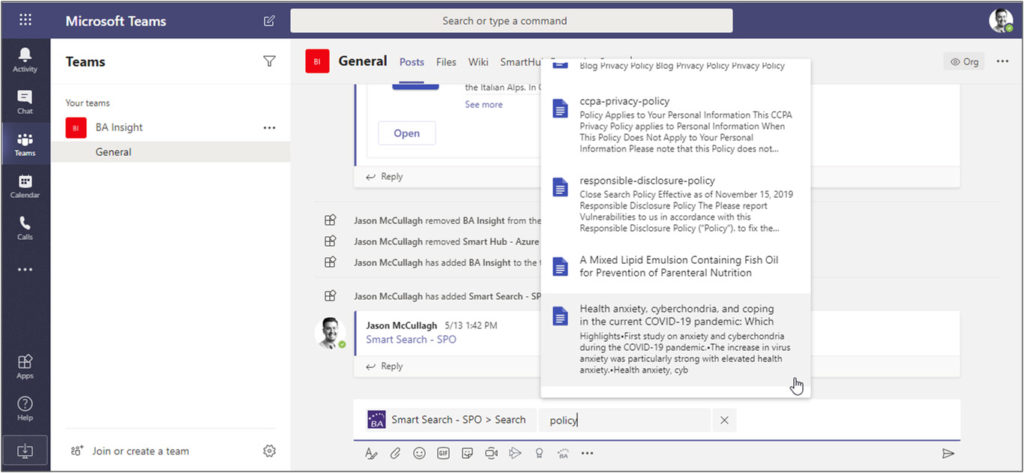If someone had said to me at the start of the year that Brexit would not be the number one topic on the front pages of UK newspapers, the aviation industry would be in crisis because you couldn’t fly internationally, petrol prices had fallen to below £1 a litre, or that you need to wear a mask to go to the grocery store….I would have found it mildly bemusing and somewhat hard to believe. BUT, if someone had said to me, Jason, you need to give your mother a one hour crash course in Microsoft Teams because for the foreseeable future, she will be conducting her teacher governor meetings online, from home and using video – I would have thought, hang on a minute, this person is trying to wind me up.
I am not being harsh on my mother, but this is a new world for her and many others. If you told me that I had to teach children for an hour, never mind a day, a week, or a term – forget it, I would be hopeless.
Smart Working
I work for a technology company where working from home is the norm and has been for many years. Our team is geographically dispersed, so using virtual collaboration and communication platforms such as Zoom, WebEx, GoToMeeting, Microsoft Teams, etc. is just something that is part of everyday BA Insight life. For my colleagues and I, the coronavirus pandemic has not really changed our work behaviours. However, as we are already seeing, there is significant impact on those working in many sectors be it education, entertainment, holiday, government, financial services, etc. It seems highly unlikely that even when the coronavirus pandemic dies down that we will go back to the traditional ways of working. Of course, some people will still go into the office, but for others this idea of “Smart Working” or “teleworking”, defined in the Cambridge Dictionary as “the activity of working at home, while communicating with your office by phone or email, or using the internet”, will potentially become the new norm.
Yet too often, organisations only focus on the online meeting/collaboration aspect of the “Smart Working” umbrella. In truth, online meetings aren’t a new concept. Did you know that WebEx was actually founded in the mid 90’s to help address collaboration issues and was very heavily used in the noughties as a high-tech tool for online presentations and demonstrations?
Today, there are a host of social technologies that address these issues be it Teams, which according to Microsoft has seen usage grow to 75 million daily active users during the coronavirus pandemic. Zoom, another enterprise video and web conferencing platform, has surpassed 300 million daily Zoom meeting participants (The Verge) and let’s not forget Workplace from Facebook. Still some way behind its behemoth older sister Facebook.com, the unified communication and collaboration platform, has also seen exponential growth over the last few months – something that we’ve noticed at BA Insight based on the number of our customers who have asked about our Workplace from Facebook connector. The platform has even announced new products in the form of Work Groups (informal Groups for co-workers) and more tools to make video conversations more interactive and enhanced tools for its portal video hardware. Microsoft Teams, Zoom and Workplace from Facebook are just a few examples of platforms that are helping transform the way we work in today’s evolving smart working behaviours.
Connect People to Knowledge and People to People
Accessing all these technologies is great, but whilst they bring new innovative and ground-breaking ways of smart working, they also introduce new challenges for organisations, in particular around finding information.
Often, organisations forget about the “how users will find the information and knowledge” to do their jobs. Of course, this is true whether you work from home or are in the office. Employees still need access to information to do their jobs. However, Smart Working has exacerbated the situation.
Let me share some statistics with you about what’s at stake:
- Employees spend 1.8 hours every day searching and gathering information. *McKinsey
- 61% of knowledge workers access four or more systems on a regular basis to get the information they need to do their jobs. *IDC
- 30% of knowledge workers access seven or more systems. *IDC
- 15% access 11+ systems. *IDC
- Over 50% of knowledge workers cannot find the information they need at work. *8×8
- 57% of employees state that difficulty finding the right information is a top contributor to lagging productivity. *8×8
The inability to find information forces re-work, redundant efforts and frustration. Sentiment: “I’ll work somewhere where I don’t feel stuck in the 90s.”
By not going into the office and having physical face-to-face contact, it eliminates the ability for workers to get up from their desks to ask a colleague where they can find this “document” or that “report”, making the situation worse. We need to provide a new way to connect people to knowledge and people to people so that employees can easily have the right information and knowledge that they need to do their jobs.
Arise the Age of “Digital Information”
Microsoft Teams, Zoom, Workplace from Facebook, Slack and many others create massive amounts of information. I mean HUGE. In the case of my mother’s governors meeting, she is creating agenda documents, meeting minutes and follow-up action plans and storing them within Microsoft Teams. Yet, it is no longer simply documents e.g. PDFs, Word, PowerPoint or Excel files. There is also the chat and collaboration around the documents. This becomes information. So often on video calls, I hear someone ask, “please could you record this demonstration so that I can share it with my colleagues?”
The Internet is a great enabler. We see this through Microsoft Teams, Zoom and the many platforms that I mention above. We also see it in our personal lives because it enables us to search for information using sites like Google, and to shop online using self-service portals like Amazon. Surely with this new ‘Smart Working’ culture, wouldn’t it be great if you could have an internet for the enterprise? You know, “internet-like” experiences within your organisation that enables team members to find relevant and needed information quickly?
Picture this, the ability to perform one search and access content across multiple systems, all from a single point of entry. BA Insight’s SmartHub software enables that exact experience. An enterprise platform that delivers an internet-like, personalised and relevant search experience to users. Search once and get content back from various organisational content sources including O365, ServiceNow, Box, Fileshares, Salesforce, NetDocuments, OpenText and many more. Find out more about BA Insight Connectors, which enable content from over 90 enterprise applications to be searched.
Enterprise search via SmartHub removes the physical boundaries of office walls. As a project worker, I can search for project information and get access to project plans that reside in SharePoint Online, the project team members from the corporate directory, project finance information from SAP, the latest project group chat from within Yammer, a video recording of the daily meeting stored in OneDrive and a whole host of pertinent and useful information.
Go to Teams, Live in Teams, Never Leave Teams
Let’s go back to my mother’s governors meeting for a minute. As she is now a seasoned pro at Teams (following a crash course in how to use Teams!), working in Teams means that she can access all the information from the governors meeting. However, what about the follow up actions from the meeting e.g. checking pupil reports or confirming budgets for the forthcoming school year? As this information is not held in Teams, it means that she needs to go to the pupil report application to review the reports and to the finance system to search for budgetary information. Time spent logging onto other applications and searching for information is an unproductive use of her time. Surely a more productive way of smart working would provide her with the ability to access all related information, in one place. With BA Insight for Teams, employees have access to the knowledge that they need, directly in Teams, rather than having to spend time searching many different systems. A single-source-of-truth for all content so my mother wouldn’t need to leave teams to find budgetary information or pupil reports.
To provide even greater efficiencies, my mother can search for the content from within Microsoft Teams and attach the relevant documents during the meeting.
Video and Images are Knowledge Too
As mentioned, quite often people ask me to record a meeting and share the recording. The problem that video content creates is it often becomes unsearchable. Historically, people search on the video title, however if it is poorly named “2020-01-09 13.35.46 Jason McCullagh’s Personal Meeting Room 9592322001” then how do you expect to find it? It effectively falls into the black hole of content – never to be seen again.
As we are seeing with the rise of social technologies, video (and in some cases, images) is becoming an important form of organisational information. For example, a project manager invites you to a Zoom video call to discuss the progress of the project. The call is recorded so it can be shared with those who cannot make it. After the call, the video is uploaded to a video platform. Let’s use Kaltura as an example.
- You want to review the video.
- You search for the video based on title.
- You may try some search variations.
- Eventually, you can’t find it, get frustrated, and give up.
Imagine an alternative scenario:
- You want to review the video.
- You search for the video based on the project name, project requirements, agenda items etc.
- Video is returned in your results plus any other related content.
- You are a happy camper.
The BA Insight AutoClassifier video capabilities analyses the content of a video, extracts text and speech and returns a text searchable transcript. This means that you no longer need to rely on just the video title to locate it. Find out more about autoclassification enhanced with image and video analysis with BA Insight.
There is no doubt that the way we work has changed and will continue to do so. Similarly, the coronavirus pandemic has accelerated the view that a workplace should no longer be constrained to the physical boundaries of an organisation’s office walls. Technology is most certainly aiding this process as it advances. Yet as we change our approach to work, organisations must recognise that the way we access information and knowledge needs to evolve too, while being mindful that the format of information is also shifting – as my mother most certainly is!




